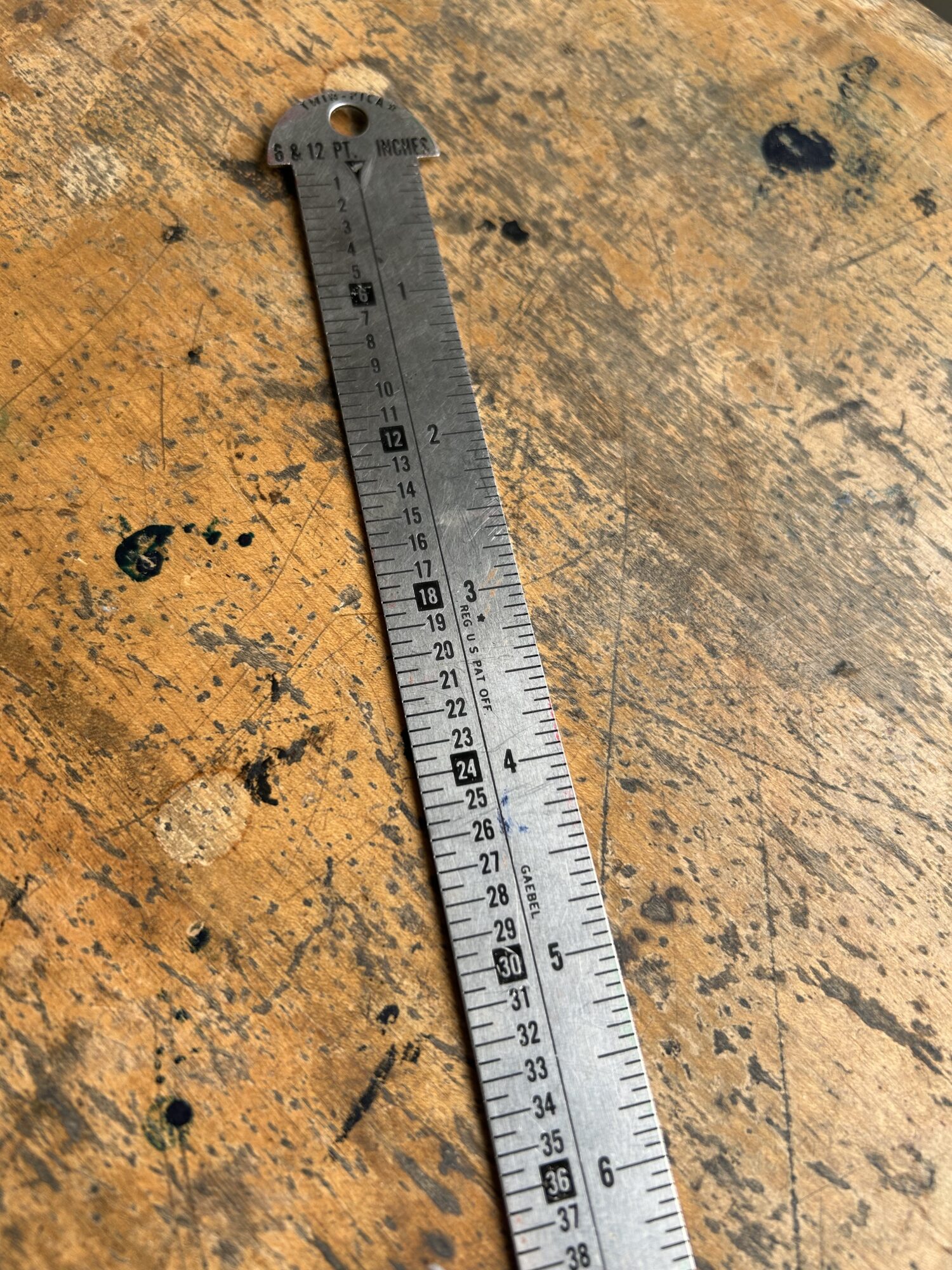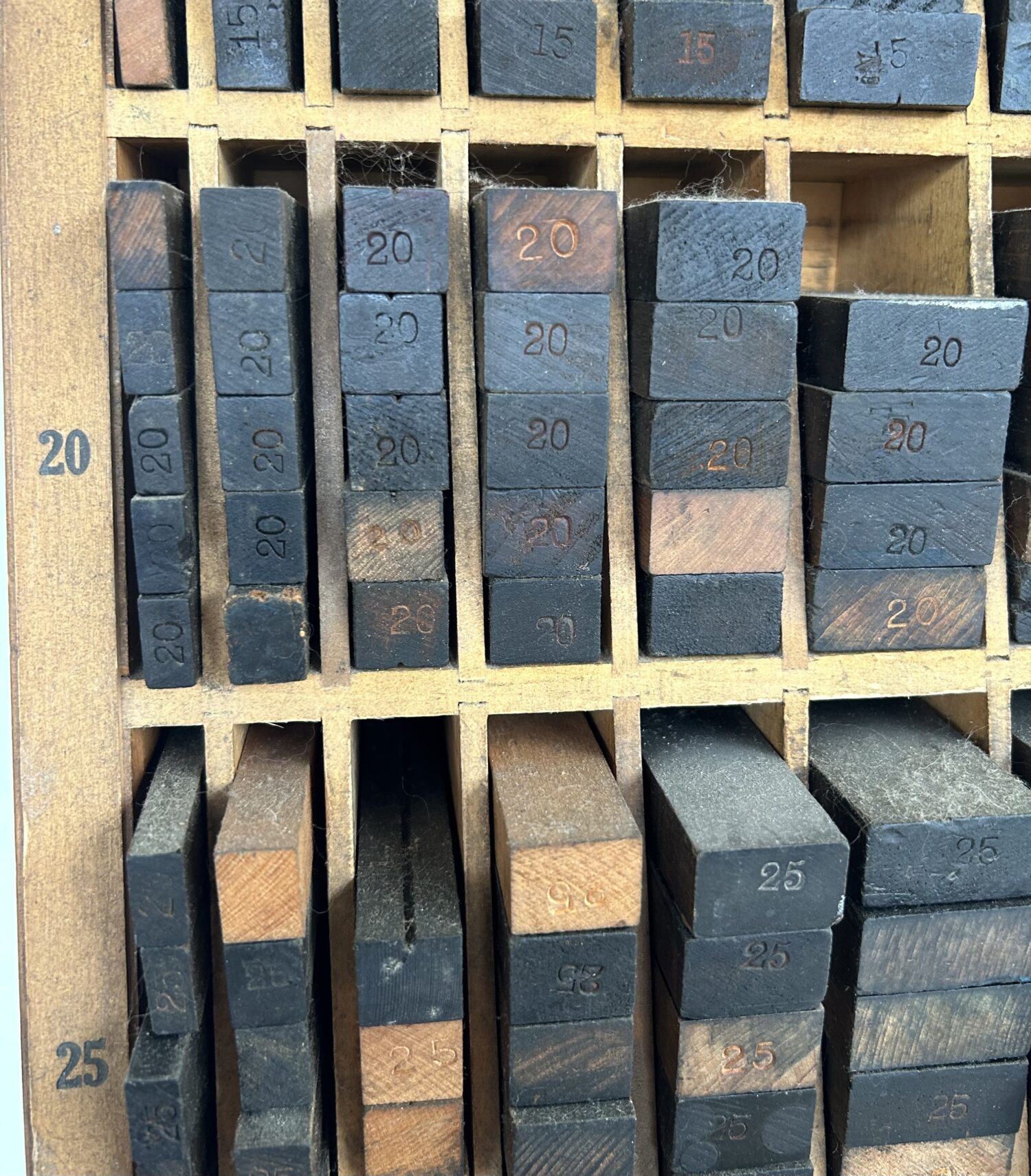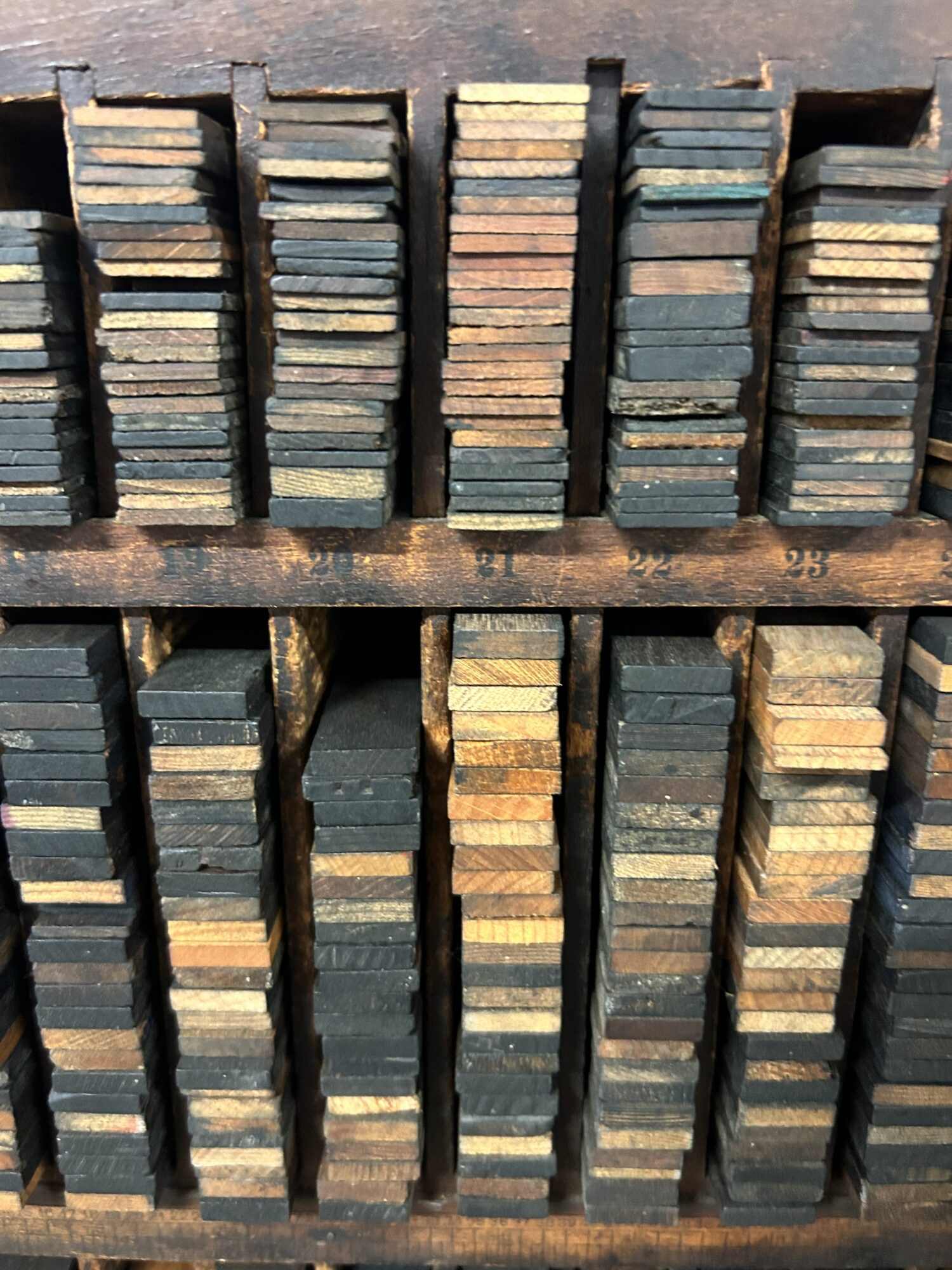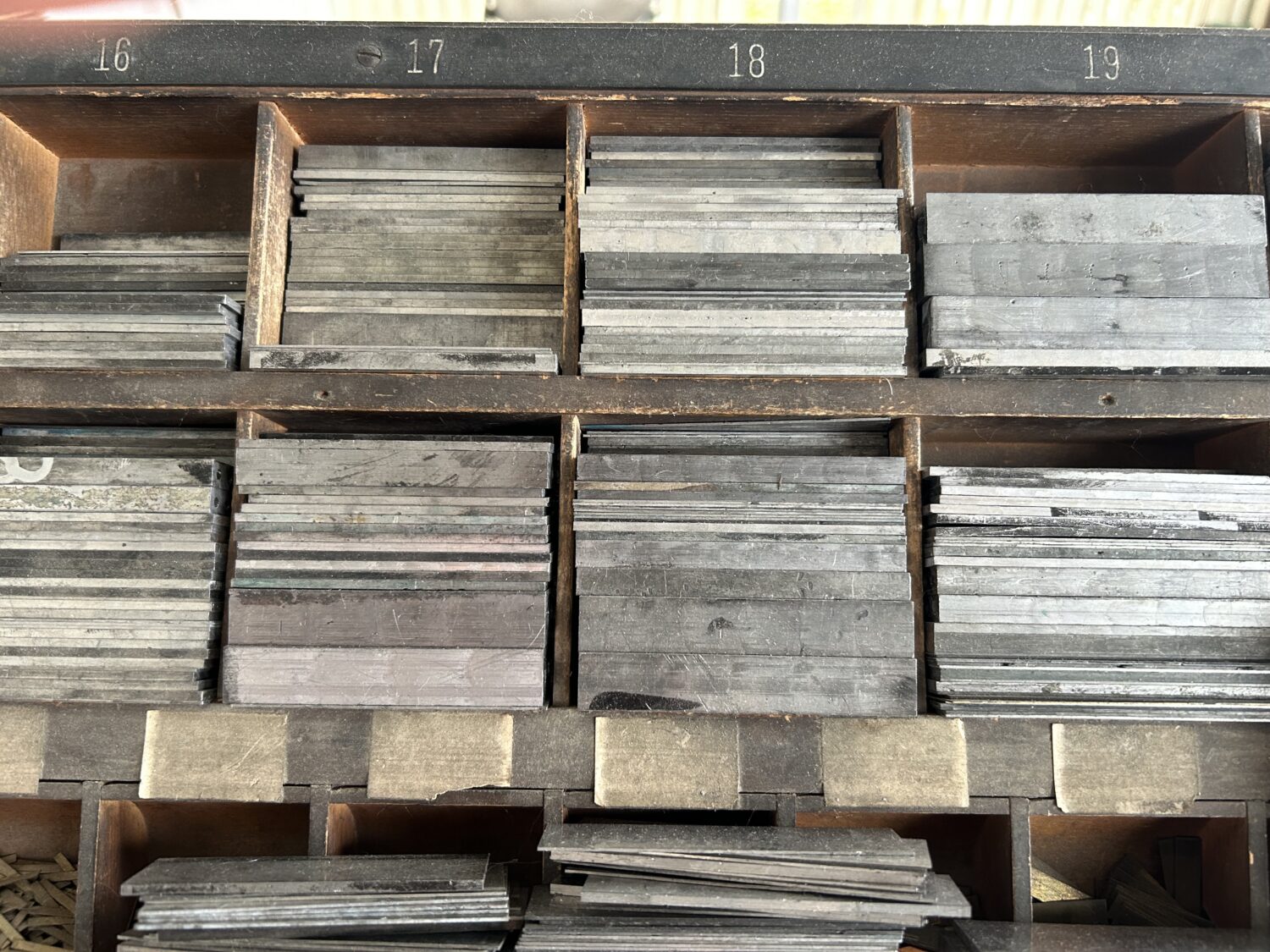Your cart is currently empty!
Keep your inch ruler at home because we only use points and picas around the shop here. The point and pica system is the cornerstone of typography and the whole letterpress printing system.
The point is believed to have originated in the 15th century. It is the smallest unit of measurement for type, this size was supposedly inspired by the width of a lead bullet. Which seemed mighty big to me. But I guess back then they couldn’t cast as small as type as we have now, so the point size has gotten smaller and smaller as the type got smaller.
The pica is a larger unit of measurement and is simply 12 points. This is a pica rule or line gauge because the pica was needed for longer line lengths. And yes they still had inches so you could still measure that piece of paper.

But the pica was standard for furniture, reglets, and lead spacing… mainly the widths being either 1 pica wide or a half of pica or 6 points.



The point and pica system’s popularity in printing can be attributed to several factors:
Standardization: The system provides a standardized unit of measurement, ensuring consistency in typography across different regions, time periods and type manufacturers. So in other words, your 48 pt. ATF Foundry Type made decades earlier is the same as your Comic Sans 48 pt.
Divisibility: Points and picas are easily divisible, making it simple to specify various type sizes and line spacing.
Historical Significance: The point and pica system have played a crucial role in the development of typography, from the early days of printing to the modern era. Many terms have even crossed over the digital divide. Font size, we still call a 6 pt a 6 pt and a 48 pt a 48 pt. We still add leading between lines, and you can still set your page dimensions to picas in design programs.
By understanding the origins and relationship between points and picas, typographers can appreciate the historical significance of these units of measurement and use them effectively in their work.


Leave a Reply